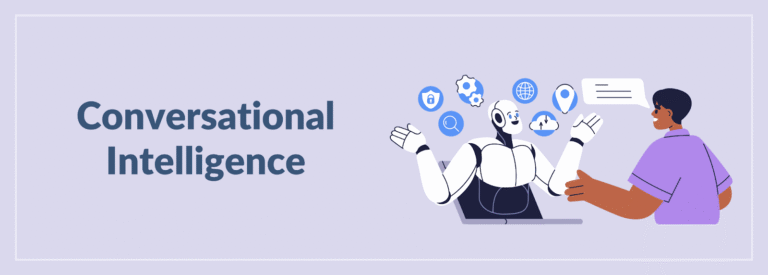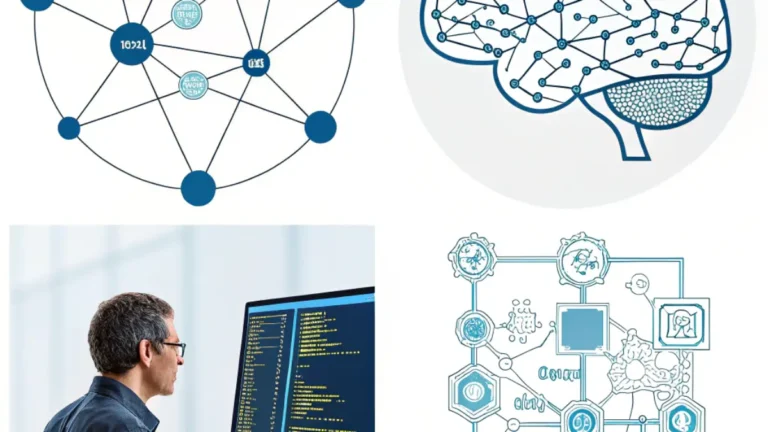
Introduction
Regression testing makes sure that new changes do not break existing functionality. As software grows, traditional methods face challenges with scalability and efficiency. Maintaining test scripts also becomes difficult.
AI is transforming regression testing. It selects the most relevant test cases, reduces manual effort, and predicts defects early. It also automates script maintenance. This improves accuracy and speeds up feedback.
With AI for software testing, teams can focus on innovation while maintaining software quality. This article explores how AI enhances regression testing. It covers key benefits and real-world applications in modern development.
What is Regression Testing?
It is a software testing process. It makes sure that recent changes do not harm existing functionality. These changes include bug fixes, code modifications, or new features. Even a small update can cause unexpected issues. To prevent this, testers re-run old test cases. This confirms that the software still works correctly. It helps maintain system stability after every update.
Why is Regression Testing Important?
Regression testing helps keep software stable. Here’s why it is needed:
- Stops New Bugs from Breaking Features – Even small changes can cause issues. Testing helps find them early.
- Supports Fast Development – Agile and DevOps teams update software often. Quick testing makes releases smooth.
- Keeps Software Reliable – Regular testing prevents sudden failures. It ensures the system stays stable
How AI is Applied in Regression Testing
Here are some of the ways:
- Intelligent Test Case Selection and Prioritization
AI improves regression testing by selecting test cases intelligently. It analyzes code changes and past test results. Instead of running all test cases, AI picks the most relevant ones. This reduces execution time while keeping test coverage intact. AI also identifies high-risk areas. It ensures that these areas get more attention. This makes testing more efficient.
- Self-Healing Test Automation
Maintaining test scripts is a big challenge. UI elements and object properties change often. AI-powered frameworks detect these changes automatically. They update test scripts without manual effort. This keeps automated tests running smoothly. Even as the application evolves, tests remain functional.
- AI-Driven Defect Prediction and Root Cause Analysis
AI predicts defects before they happen. It studies past test results and failure patterns. By analyzing code modifications, AI finds areas likely to have defects. It also traces failures back to specific changes. This helps teams fix issues faster and more accurately.
- Automated Test Case Generation
AI creates test cases dynamically. It studies application behavior and test history. It also reviews logs to generate new test cases. These test cases cover edge cases that manual testers might miss. This improves coverage and reduces manual work.
- Parallel Test Execution and Optimization
AI speeds up regression testing by running tests in parallel. It executes test cases across multiple environments. This includes different devices and browsers. It is useful in CI/CD pipelines, where speed matters. AI also detects redundant tests. It removes unnecessary runs, making testing faster and more efficient.
- AI-Powered Visual and UI Testing
Visual testing is important in regression testing. UI elements must appear correctly on all screen sizes. AI-based tools compare screenshots automatically. They detect UI issues and layout inconsistencies. This makes visual testing more thorough.
- Continuous Learning and Adaptive Testing
AI improves with time. It learns from previous test results. It refines test selection and execution strategies. AI adapts as the application changes. This ensures that regression testing becomes smarter with every iteration.
Key Benefits of AI in Regression Testing
Here are some of the key benefits of AI in regression testing:
- Speed and Efficiency
AI speeds up regression testing by automating test execution. It shortens testing cycles significantly. AI enables parallel test execution. Tests are run across multiple environments at the same time. This helps teams validate software changes faster. A quick feedback loop is important for continuous integration and deployment. It helps detect and fix issues early.
- Improved Accuracy
AI improvize test correctness by lowering false positives and false negatives. This minimizes unnecessary debugging. Advanced pattern recognition helps AI detect anomalies effectively. It catches defects that traditional testing might miss. AI also eliminates human errors in test execution. This ensures reliable and consistent test results.
- Enhanced Test Coverage
AI expands test coverage by identifying gaps in existing test cases. It intelligently explores untested scenarios. This ensures a more complete validation of the application. AI also adapts test cases based on recent code changes. This keeps testing aligned with software updates.
- Reduced Maintenance Effort
Frequent application updates make test script maintenance challenging. AI simplifies this by using self-healing automation. It detects UI and code changes automatically. Then, it updates test scripts without manual intervention. This reduces effort for testers. It also keeps automated tests stable. Testers can focus on more strategic tasks.
- Cost Efficiency
AI optimizes test execution. This reduces infrastructure costs for running large test suites. AI-driven automation also lowers the need for large testing teams. Organizations can allocate resources more effectively. With lower maintenance and improved efficiency, overall testing costs decrease.
- Early Bug Detection and Prevention
AI helps detect defects early using predictive analytics. It studies historical test data to find high-risk areas. This allows teams to fix potential issues before testing begins. AI-assisted root cause analysis also helps speed up defect resolution. It prevents recurring issues. This leads to better software quality.
- Better Decision-Making with AI Insights
AI provides valuable insights by analyzing test execution data. It helps teams make informed decisions. AI prioritizes critical test cases based on risk assessment. This ensures that the most important areas get tested thoroughly. AI-driven analytics also optimize testing continuously. This improves efficiency and software reliability.
Real-World Applications of AI in Regression Testing
AI improves regression testing. It automates tasks and optimizes test execution. It also helps detect defects more accurately. This leads to better software quality and faster testing cycles.
- Automated Test Case Selection
AI analyzes code changes. It also reviews past test results. This helps in selecting the most relevant test cases. AI ensures test coverage remains high. At the same time, it reduces execution time.
- Self-Healing Test Automation
AI-powered frameworks detect changes in UI elements. They also recognize modifications in code structure. AI updates test scripts automatically. This minimizes test maintenance efforts. It keeps automation stable despite frequent software updates.
- AI-Driven Visual Testing
AI compares screenshots. It detects UI discrepancies. This ensures that layouts remain consistent. AI maintains uniformity across different devices and browsers. It improves the accuracy of visual testing.
- Defect Prediction and Root Cause Analysis
Machine learning analyzes historical test data. It predicts potential failure points. AI traces defects back to specific code changes. This helps developers identify and fix issues quickly.
- Dynamic Test Case Generation
AI creates new test cases. It does this by analyzing user interactions. AI also studies system behavior. This expands test coverage. It ensures that untested scenarios are included.
- Parallel Test Execution Optimization
AI enables parallel execution. It runs tests across multiple environments. This significantly reduces regression testing time. It is particularly useful in CI/CD pipelines.
- Anomaly Detection in Test Results
AI identifies unusual patterns. It detects anomalies in test outcomes. This reduces false positives and negatives. It helps testers find real defects more reliably.
- Intelligent Log Analysis
AI processes large volumes of logs. It detects patterns in system behavior. AI highlights errors automatically. This accelerates debugging. It also helps in resolving issues faster.
AI-driven regression testing streamlines processes. It enhances efficiency. It ensures software releases are stable and reliable.
Challenges and Considerations of AI in Regression Testing
AI improves regression testing. However, it comes with challenges. These challenges require careful planning. They also need ongoing management.
- High Initial Implementation Cost
AI integration requires investment. Companies need tools and skilled professionals. These factors make adoption expensive. The cost can be a barrier for many organizations.
- Data Dependency
AI relies on data. It needs high-quality training data. Inaccurate or a lack of data affects results. Poor data can lead to incorrect test outcomes. It may also cause defects to go unnoticed.
- Complexity in AI Model Training
Training AI is complex. AI must recognize patterns in test results. It also needs to detect anomalies. This requires expertise. Continuous refinement is necessary. It improves accuracy over time.
- False Positives and Negatives
AI minimizes human errors. However, it is not perfect. Sometimes, it misinterprets changes. This can cause false test failures. It may also overlook actual defects.
- Limited Understanding of Business Logic
AI works with patterns and past data. However, it does not fully understand business needs. Human oversight is necessary. This ensures that AI aligns with business requirements.
- Integration with Existing Tools
AI-powered testing must work with current systems. Some companies use legacy software. Adapting AI to these systems is challenging. Compatibility issues may arise.
Best Practices for AI in Regression Testing
AI improves regression testing. However, it must be used correctly. Following best practices helps maximize its benefits.
Select the Right AI-Powered Testing Tool
Choose an AI-driven tool carefully. Ensure it integrates with your current framework. It should also support your application’s technology stack. Compatibility is important for seamless testing.
KaneAI by LambdaTest is an AI-native testing platform that helps teams create, debug, and refine tests. As a powerful testing AI, it leverages natural language to simplify test automation, making it easier to get started without deep expertise. This intelligent approach lowers the barrier to entry and speeds up the entire testing workflow.
Key Features
- Intelligent Test Generation
AI simplifies test creation. It understands natural language instructions. This reduces manual effort. - Intelligent Test Planner
AI automates test steps. It aligns them with high-level objectives. This makes planning faster and more efficient. - Multi-Language Code Export
AI generates automated tests. It supports all major programming languages. This provides flexibility for different teams. - Smart Show-Me Mode
AI translates user actions. It converts them into clear instructions. This helps build strong and reusable tests.
Ensure High-Quality Training Data
AI depends on data. Train it with diverse and accurate test data. This improves prediction accuracy. It also reduces false positives and negatives.
Start with Small-Scale Implementation
AI adoption should begin gradually. A pilot project is a good starting point. This helps assess its effectiveness. Scaling should come after proven success.
Combine AI with Human Oversight
AI automates many tasks. However, human testers play a key role. They must validate results. They also need to review anomalies. Understanding business logic requires human expertise.
Conclusion
AI is changing regression testing. It improves efficiency and reduces maintenance. It also enhances accuracy by optimizing test selection. AI adapts to changes and integrates into CI/CD pipelines. Security and compliance must be a priority. Collaboration between teams strengthens AI models. Continuous monitoring keeps AI effective. These steps help teams deliver high-quality software faster.






